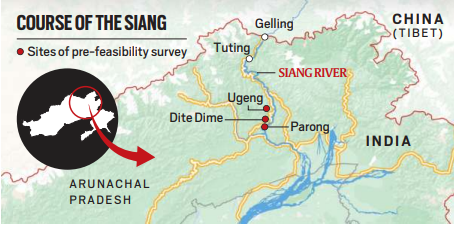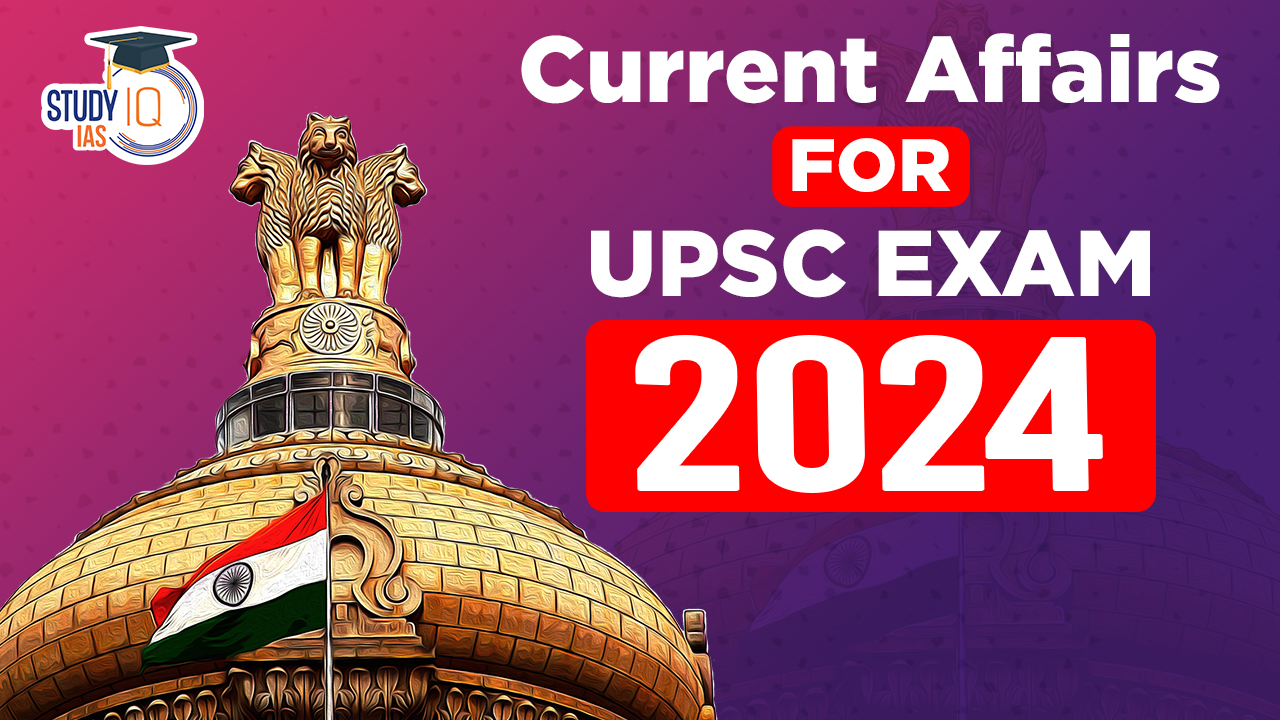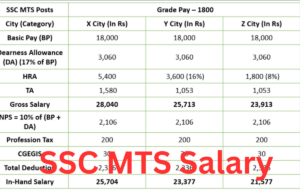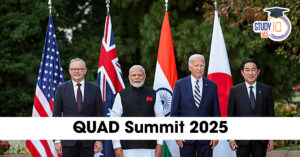Table of Contents
World Population Day
Context: World Population Day has been observed on 11th July 2024.
About World Population Day
- Celebrated on: 11th July, since 1989 after the global population surpassed five billion..
- Established by: United Nations in 1989
- Proposed by: K.C. Zachariah, a renowned demographer.
- Theme 2024: “Leave no one behind, count everyone”
| Facts |
| Currently, the global population is estimated at 8.1 billion, with India being the most populous nation at 1.44 billion, slightly more than China. |
Socio-Economic Changes in India Over 27 Years
Population Growth and Fertility:
- Population grew 44% from 100 crore (1 billion) to 144 crore (1.44 billion).
- Annual growth rate fell from nearly 2% to below 1% due to a decrease in the Total Fertility Rate (TFR) from 3.4 to 2, just below the replacement level of 2.1.
Economic Growth and Life Expectancy:
- Per capita GDP increased six times from $400 to $2,400.
- Average life span increased from 61 years to 70 years.
Poverty Reduction:
- Percentage of Indians below the multi-dimensional poverty line decreased from 43% to 11%.
- Despite the reduction, 11% of 144 crore is still a large number (16 crore people).
- These 16 crore people are unevenly distributed, with 83% residing in four states: Uttar Pradesh, Bihar, Madhya Pradesh, and Jharkhand, which constitute only 34% of India’s total population.
Impact of Climate Change
Global Disparity:
- Climate change does not recognize national boundaries, affecting poorer nations more severely.
- Debate on historical emissions (developing countries) vs. current emissions (developed world) correlates with population vs. people consumption.
Consumption Comparison:
- OECD countries with a per capita income of $40,000 and a population of 1.39 billion produce and consume $55.6 trillion worth of resources.
- India, with a per capita GDP of $2,400 and a population of 1.44 billion, produces and consumes $3.5 trillion worth of resources.
- OECD countries consume nearly 16 times more than India, contributing significantly to global warming.
Economic Priorities:
- With 11% of its population still below the poverty line, India prioritises economic growth over climate change mitigation.
- Responsibility for climate action lies more with OECD countries and increasingly with China.
- India negotiates for its right to economic growth to alleviate poverty.
Global South and Economic Growth
India’s Stance:
- The Modi government emphasised economic growth within the Circular Economy framework in the G-20 New Delhi Declaration of September 2023.
- Focus on decoupling economic growth from environmental degradation while supporting sustainable consumption and production.
Global South Perspective:
- Developing nations prioritise economic growth over responding to population growth concerns.
- India aims to achieve zero poverty within the next decade and net zero by 2070, compared to the EU’s 2050 target.
CrpC and Personal Laws
Context
- The Supreme Court dismissed an appeal by a Muslim man against a Telangana High Court order, allowing his ex-wife to seek maintenance under the Code of Criminal Procedure, 1973 (CrPC).
- A two-judge Bench reiterated that a Muslim woman is entitled to seek maintenance under Section 125 of the CrPC even after a religious divorce.
The Present Case
Background:
- Petitioner Mohd Abdul Samad challenged a 2017 family court order directing him to pay maintenance of Rs 20,000 per month to his former wife.
- The Telangana High Court upheld the family court’s decision.
Section 125 CrPC:
- Obliges “any person having sufficient means” to maintain “his wife” or “his legitimate or illegitimate minor child” if they are unable to maintain themselves.
- The term “wife” includes a divorced woman who has not remarried.
Court’s Opinion:
- Section 125 CrPC is embedded in the Constitution’s philosophy as a social justice measure.
- Maintenance is crucial for the destitute and deprived women, aligned with Article 15(3) and Article 39(e) of the Constitution.
- Maintenance under Section 125 CrPC exists “in addition” to provisions under the Muslim Women (Protection of Rights on Divorce) Act, 1986 (MWPRD Act), not against it.
Historical Context
Shah Bano Decision (1985):
- Shah Bano Begum sought maintenance under Section 125 CrPC. Her husband argued he was only required to provide maintenance during the iddat period as per Muslim personal law.
- The Supreme Court upheld the Madhya Pradesh High Court’s decision, stating that Section 125 CrPC “cut across the barriers of religion”.
- The government enacted the MWPRD Act, placing the maintenance obligation after the iddat period on the wife’s relatives or the State Wakf Board.
Challenge to 1986 Act
Danial Latifi Case (2001):
- Shah Bano’s lawyer, Danial Latifi, challenged the constitutionality of the MWPRD Act.
- He argued that the Act discriminates against Muslim women, violating Articles 14 and 21 of the Constitution.
- The Supreme Court interpreted Section 3(a) of the MWPRD Act to mean that a husband must provide for a divorced wife’s future needs within the iddat period, ensuring maintenance beyond this period if necessary.
- The Court upheld the constitutionality of the MWPRD Act.
Conclusion
- The Supreme Court reiterated the necessity of maintenance under Section 125 CrPC for divorced Muslim women, affirming the decision in the Danial Latifi case.
- Maintenance provisions under the CrPC complement, rather than contradict, the MWPRD Act.
Mega Dam and Protests in Arunachal
Context: The Upper Siang Multipurpose Storage Project in Arunachal Pradesh has become a point of contention for local communities.
About The Upper Siang Project
- Proposed 11,000-megawatt hydropower project on the Siang River in Upper Siang district.
- Siang River, originating as Tsangpo in Tibet, flows into Arunachal Pradesh and further into Assam as the Brahmaputra.
- In 2017, the government proposed a single 11,000 MW project replacing two smaller projects.
- The project involves a 300-metre-high dam, the largest in the subcontinent, built by the National Hydroelectric Power Corporation (NHPC).

- Strategic Importance:
- Project seen as a countermeasure to China’s 60,000 MW super dam in Tibet’s Medog county.
- Intended to act as a reservoir to mitigate potential reduced water flow from China’s projects.
Environmental and Social Concerns
Local Opposition:
- Anti-dam organisations, including Siang Indigenous Farmers Forum (SIFF), Dibang Resistance, and North East Human Rights, oppose the project.
- Concerns over environmental impact, displacement of communities, and submergence of more than 300 Adi tribe villages.
- The project threatens delicate ecosystems, wildlife habitats, and the cultural practices of local communities.
Activist Perspectives:
- Gegong Jijong, an SIFF activist, highlighted the survival challenges if villages are submerged.
- Chief Minister Pema Khandu promised the project would proceed only with public consent.
Renewed Push and Resistance
Government and NHPC Activities:
- Authorities have increased pre-construction activities despite public apprehensions.
- Senior NHPC officials met with Arunachal Pradesh Deputy Chief Minister to expedite project commencement.
- The Upper Siang administration conducted multiple meetings for pre-feasibility surveys.
Public Outreach and Support Campaign:
- NHPC sanctioned a Rs 325 crore CSR package for livelihood schemes, and development of health, education, and sports infrastructure.
- Authorities are conducting public awareness activities to garner support.
Legal and Strategic Concerns:
- Forest (Conservation) Amendment Act, 2023 exempts strategic projects within 100 km from India’s borders from forest clearance.
- Activists criticise framing the project in national security terms, highlighting the region’s history of anti-dam resistance.
Conclusion
- Authorities are preparing for pre-feasibility surveys despite local resistance.
- Activists remain concerned about the environmental and social impacts and question the project’s framing as a national security issue.
Examples, Case Studies and Data
Recognition of LGBTQIA+ Rights (GS 2): The central government approved the request of a Hyderabad-based Indian Revenue Service (IRS) officer to change their name and gender.
- Other Instances:
- In June 2015, a BA LLB law student of NALSAR University requested that gender not be identified in the graduate certificate. The university agreed to use the honorific prefix ‘Mx’ instead of ‘Ms’, marking a step towards recognizing gender fluidity.
- Ruth Paul John became the first transgender doctor to secure a position in the MD Emergency Medicine program at ESI Hospital, Hyderabad.
- In July 2023, the Telangana Government established the first transgender clinic in Osmania General Hospital.
- In February 2024, the University of Hyderabad announced a transgender policy for the academic year 2024-25, becoming the second university after Delhi University to implement such a policy.


 SSC MTS Salary 2025, Check Highest Salar...
SSC MTS Salary 2025, Check Highest Salar...
 F-35 Fighter Jet Stranded in Kerala: Dis...
F-35 Fighter Jet Stranded in Kerala: Dis...
 Quad Summit 2025: Key Announcements, Str...
Quad Summit 2025: Key Announcements, Str...





















